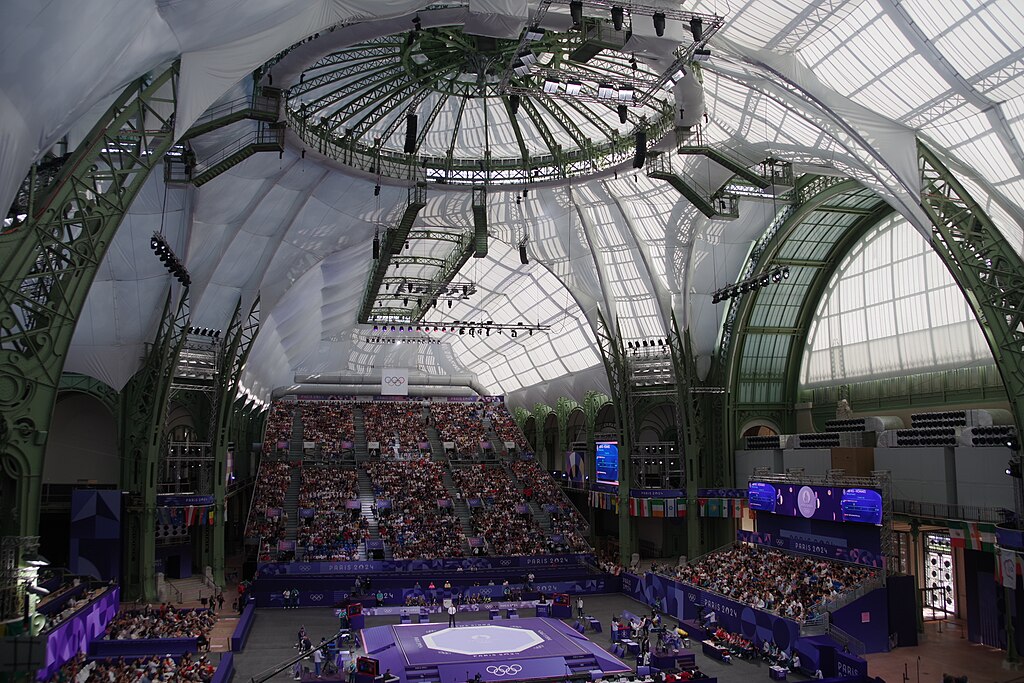
Has Paris created a new type of legacy for the Olympic Games?
When the Olympic Games begin, I’m not only excited to watch the athletes in action, but as someone passionate about architecture, I always look forward to seeing the cutting edge stadiums and arenas built for the events. This year however, the host city Paris announced that they were not going to invest in new buildings but repurpose existing ones – some that had never been used for sports events – as part of its aim to be ‘the greenest games’ to date. Now the Olympics are over, it’s left me wondering how this decision has impacted the legacy of the Games for the French capital? Without new centres, will the Games still be able to boost physical exercise and attract development in local communities?
When the list of buildings, monuments and structures that were to be used was released, it was a pretty exciting line up. The programme included fencing at Le Grand Palais, equestrian sports at Le Château de Versailles and beach volleyball at the Eiffel Tower in addition to football and other sports at France’s top stadiums. As some of the locations were heritage sites, part of the preparation for the Games was to speed up their restoration works and enhance their accessibility, wayfinding and energy efficiency. Far from using tired stadiums and erecting temporary structures at fringe sites, it seemed Paris was using the Olympics as a catalyst for long lasting change in the capital and beyond. These Olympic Games would be leaving a new kind of legacy for the host city.
I found watching the games in action at these landmarks even more delightful as overnight these grandiose or exclusive places had become accessible to the public. Part of the magic and continuing significance of the Olympics is how it unites people from all over the world to enjoy sports that they may know nothing about, yet support their fellow citizens in. Using these public spaces for these events was an ingenious move and a gold standard example of cultural placemaking – bringing people into public spaces that foster community engagement, cultural expression and a sense of belonging.
This type of placemaking is a passion of mine and Paris has certainly set the bar high for future events like this. Using the existing streets, rivers, monuments and buildings allowed visitors and residents to easily participate in the ceremonies, games and spectating. Mixing French culture, food, music and art with that of other nations in one place was definitely a triumph of cultural placemaking in my opinion.
What matters now though is the legacy this leaves once everyone has packed up and gone home. Has the repurposing of historic buildings meant that they will now have an enhanced function in the city? Or after the games will they go back to being tourist hotspots, ignored by residents?
The answer is hopefully not. Grande Nef de l’Île-des-Vannes is a great example of a restoration project with a dual purpose. Once a forgotten building, it was overhauled to become a training facility for the athletes and will be opened to the public after the Games as a sports complex – turning an abandoned, inaccessible, inefficient building back into a functioning part of the local community. For other buildings just bringing them up to date with modern real estate will ensure their longevity and attract investment in the vicinity. Updates to their energy efficiency and accessibility should enable millions of French citizens and tourists to visit them and enjoy their greatness for many years to come.
Paris hasn’t built any white elephants and is so far achieving it’s target of being the greenest games ever. By defying the norms of previous host cities, Paris has paved a better path for the future of the Olympics, sustainable cities and inclusive placemaking. Time will tell whether other cities emulate this approach, but for now we can enjoy the next week of the Paralympics with the backdrop of some of the world’s most historical landmarks.

